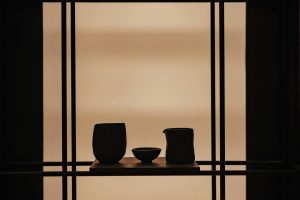Exploring pop-up stores for exclusive limited-time products
Pop-up stores have become a growing trend in the retail industry over the past few years. These temporary stores offer a unique and exclusive shopping experience for customers, often featuring limited-time products that cannot be found anywhere else. With the rise of e-commerce and online shopping, it may seem counterintuitive for brands to invest in physical stores, but pop-up stores have proven to be a successful marketing strategy for many retailers. In this article, we will explore the concept of pop-up stores and why they have become so popular, as well as the benefits they provide for both brands and consumers.
The Rise of Pop-Up Stores
The concept of pop-up stores is not a new one. They first appeared in the retail scene in the early 2000s, but have gained significant popularity in recent years. It is estimated that the pop-up retail industry is worth over $50 billion globally, with major cities like New York, London, and Tokyo being hotspots for these temporary shops.
So why have pop-up stores become so popular? One reason is the element of exclusivity. The limited-time nature of these stores creates a sense of urgency and excitement among customers. People are drawn to the idea of purchasing a special and unique product that may not be available again in the future.
Additionally, pop-up stores often offer a more personalized and immersive shopping experience compared to traditional retail stores. They are usually designed with a specific theme or concept in mind, creating an environment that is Instagram-worthy and shareable on social media. This attracts a younger demographic and helps to generate buzz and word-of-mouth marketing for the brand.
Exploring Pop-Up Stores: What to Expect
Each pop-up store is different and offers a unique experience, but there are a few common elements that you can expect to find in most pop-up stores. Firstly, the location is often carefully chosen to align with the brand’s image and target audience. Some pop-up stores are situated in high-traffic areas like shopping malls or popular tourist spots, while others may be located in more unconventional settings such as vacant warehouses or outdoor spaces.
The interior of a pop-up store is also designed to create an immersive and engaging shopping experience. Many stores feature eye-catching displays, interactive elements, and even live demonstrations or workshops to keep customers entertained. This helps to create a deeper connection between the brand and its customers, fostering brand loyalty and leaving a lasting impression on shoppers.
And, of course, what makes pop-up stores so attractive are the exclusive limited-time products that are sold within them. These products are often specially curated for the pop-up store and cannot be purchased elsewhere. This creates a sense of urgency and scarcity, motivating customers to make a purchase before the products are gone for good.
The Benefits of Pop-Up Stores
For brands, pop-up stores offer a cost-effective way to test new markets and engage with potential customers without the commitment and expense of opening a permanent store. It also allows brands to create a sense of community and build relationships with their customers in a way that is not possible through online shopping alone.
For consumers, pop-up stores provide a unique and memorable shopping experience, offering the opportunity to discover new and exclusive products. They also allow customers to interact with the brand in a more intimate setting, providing valuable feedback and shaping the direction of future collections.
Conclusion
In conclusion, the rise of pop-up stores has brought about a new era of retail marketing. These temporary stores not only offer exclusive limited-time products but also create memorable and interactive shopping experiences for customers. As the retail landscape continues to evolve, we can expect to see more and more brands turning to pop-up stores as a way to engage with their customers and stand out in a crowded market.










